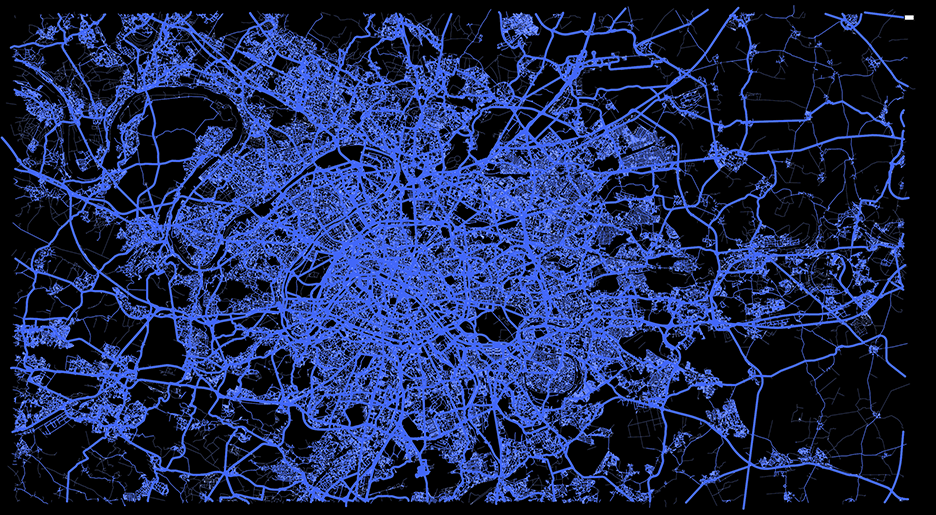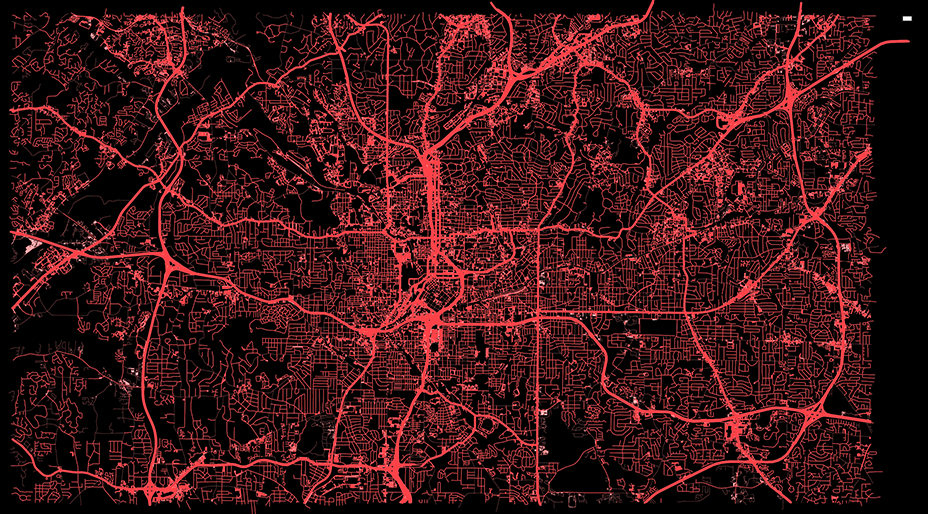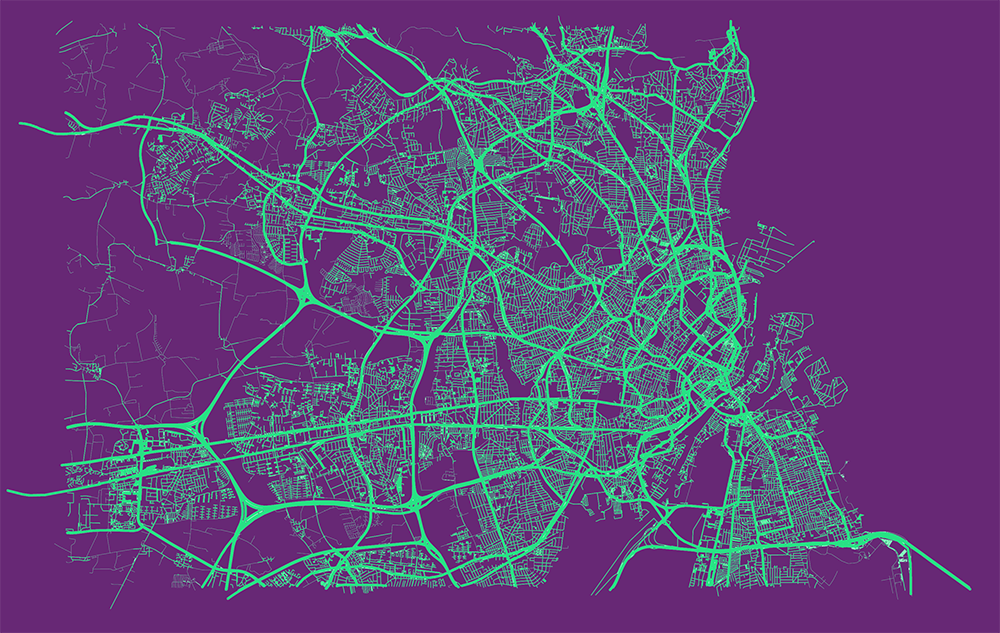
As the world changes, with more and more of us living in expanding urban areas, we require infrastructure that is going to serve various purposes – now and in the future. But before building a new public transport line or road system, it makes sense to compare the possible options, assessing how different schemes might work - and the effect (positive and negative) they might have. This is where a digital twin of a city can help to model and analyse realistic scenarios of a digital environment.
PTV Group has programmed and developed its own transport planning and modelling software, Visum, which is now well-established in the ITS world, with thousands of licences sold internationally.

“Software is only one part of the planning system; the second part is the model,” explains Udo Heidl, PTV’s director of transport modelling. “I’ve worked for a long time in this business, developing models for clients, and cities, often in collaboration with other consultants. Building a model takes a long time, because the data must be collected and integrated, traffic demand flows need to be calculated. Calibration also takes a lot of time. After all, it's important for customers that current conditions are replicated: how many cars are passing on a specific road, for example.”
Traffic counts are often at odds with models, with some level of deviation. In a nutshell, model-building is not straightforward: there is no one-size-fits-all blueprint and databases vary considerably, and manually building a base model usually takes months.
Speeding up
“Depending on the city size, setting up a transport model can be expensive – actually a lot more expensive than the software itself,” explains Heidl. And this realisation was the starting point for PTV’s new product, Model2Go: “We understood that in order to increase the business and diversity of modelling, we needed to help the industry speed up this process.”

Model2Go is a new cloud-based technology to automate much of the building of standardised transport models for the first time. PTV says it means basic transportation models can be set up for any city or region worldwide within just three days, giving users such as cities, consulting companies or research institutions a ready-made foundation on which they can directly implement simple and complex use cases. The first version which is now on the market is Model2Go Supply. A second version, Model2Go Demand, will be coming soon.
Model2Go Supply is an automated transportation model representing the supply of different modes of transport. In addition to the road network and associated parameters such as route types, speeds and capacities, it also contains the public transport network, timetables, points of interest and structural data. In addition, traffic zones can be generated.
PTV saw that more and more data was becoming publicly available and was more standardised than before. “This was the idea for Model2Go,” continues Heidl.
Being able to automate even 20% of a complex model will make things much quicker for users and will enable additional use cases – such as a supply model with no demand required.
“With Model2Go Supply we can provide the base for complex models, i.e. the first 20%; 80% of the model is then built by the users according to their individual use case,” he says. “However, we will continue to further develop Model2Go and may be able to then deliver 30%, 40% or 50% of the base of different use cases over time. We are working closely with our global community to identify more standard use cases and turn them into Model2Go fundaments.”
Standard approach
 “With our new approach we can set up models all over the world based on available data,” insists Heidl. Customers will no longer have to deal with time-consuming processes such as data collection, data integration, and the technical set-up of the model. The automated process of model generation is not only faster and less cost- and resource-intensive, but also significantly less error-prone, PTV says.
“With our new approach we can set up models all over the world based on available data,” insists Heidl. Customers will no longer have to deal with time-consuming processes such as data collection, data integration, and the technical set-up of the model. The automated process of model generation is not only faster and less cost- and resource-intensive, but also significantly less error-prone, PTV says.
Data sources have changed and expanded significantly even over the last five years. The navigation networks of Here Technologies and TomTom are used as the basis for Model2Go worldwide road network data. Then there’s the public transport network: General Transit Feed Specification (GTFS) has stop locations, lines and timetables for transit agencies all over the world running buses, trams, rail or metro, for use in Google Maps and other services, and PTV uses this same data format.
One of the issues in gathering transit data from different transportation providers is to work out what information is duplicated: for example, operator 1 and operator 2 both have a line in their files – but it relates to the same actual line in a city. “It is necessary to identify such duplicates ,” Heidl explains. “In one file it might be called line A, in another line B. You have to recognise that it’s the same line and clean it up so it doesn't show up twice in the result file. But combining different files in one database is an issue that we’ve solved.”
Planners and cities can use the information for several applications. With Model2Go Supply – as its name suggests, it is not a demand model – cities can put their data into PTV Visum and, for example, create an accessibility analysis to find the difference between travel times with public transport from A to B and with private transport, taking in the origins and destinations which experience high demand at certain times.

“This means you could see that if you build an additional bus line there you could get additional travel demand, i.e. trips,” he says. “These visualisations could be simply done using the base model in Model2Go Supply. For more complex use cases, additional data must be put in to extend the base model. For example, a demand model can be added that calculates how many people go from A to B, to work, or shopping, so you get flows on the networks, showing how many people are using a particular bus or rail line, and how many users are on specific roads.”
PTV says it is easy for customers to understand what they are looking at in a Model2Go Supply model. Maps showing various transit routes and highways are displayed in bright graphics, allowing travel times to be easily calculated. PTV Visum is then used to store, visualise and analyse the data.
Validation checks
In terms of how much time is saved by Model2Go, Heidl estimates it would take a couple of days to create the basic map of a major city instead of a couple of months. “Then we run a series of validation checks to see if the database is complete, since the data is coming from third parties.”
This will establish, for example, any discrepancies between public transit travel times according to Google Maps and travel times according to the other data which has been collected. “It could be that a specific line is not included in the base data,” he adds. “So we resolve it. Once all validation testing is done, the client receives the model, as well as a report on the product and its creation.”

For the moment, PTV delivers Model2Go as a PTV Visum file containing the model; in the future, this will be turned into a Software as a Service product. The delivered model is ready for immediate use, for example for accessibility analyses – for cars, bikes or transit, or for operational planning in public transport. Customers can also use the fundamentals of Model2Go Supply and further expand it for transportation studies, potential analysis or in traffic development planning.
“We want to reduce the time and effort it takes to create models,” says Heidl. “Model2Go will make things faster and more cost-effective and by this also more inclusive. Today, modelling is often not used in projects and planning because the set-up process is too time-consuming and answers are needed more quickly. So, one relies on gut feeling or rough estimates. Model2Go Supply opens the possibility to build a model within a few days and to answer planning questions – more quickly and reliably.”
Making improvements
Currently, not all data is available for every city in the world – for example, public transit lines, stops and timetables may be scant. But the GTFS, which defines a common format for public transportation schedules, helps here. “Even if the data is not publicly available, you can usually get it in GTFS format from the transport operators.” explains Heidl. “We can then directly use the file. But it’s, of course, also possible to build a model without public transport data, using the private transport network and OpenStreetMap information. This can also offer a good start for planning.”

While it is a new product, Model2Go is going to be continuously improved, with PTV making adjustments and enhancements as it goes along, listening to feedback from users and finding data enhancements to improve the experience and results. “Development continues - by data improvements, for instance,” points out Heidl. “In the next few years, more standardised data will be available worldwide. Cities all around the globe are working on open data strategies, opening their databases for shared use.”
“Model2Go has lots of potential,” agrees Ben Stabler VP of product management – mobility at PTV. “We plan to get customer feedback and to use that feedback to make improvements. It's a big, diverse world with a lot of needs and a lot of uses and different modelling practices in different countries. Model2Go serves all that.” And so, as it gets tailored and used in different places, we will adapt it and make it even better. We want to work with agencies and users who adopt it and we’re committed to making it best fit their needs.” ITS
Learn more: ptv.to/model2go





